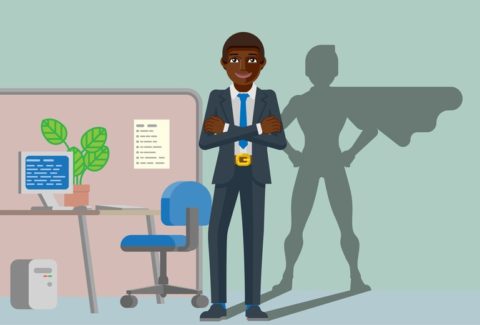The Right Training for Your Staff: 5 Ways You Can Tell
“We have eliminated more of the training providers we have been meeting with. We are grateful for your recommendations. Now, how could we tell what a good training for our clinicians looks like.” Deline, the CFO of the HOPE Care Center, articulated these words to Rodis, the consultant, who then responded, “It has been a great experience, then. You and your team have been implementing what we discussed during our meetings. Now that we have explored how you can tell the wrong training for your clinicians, let us now proceed to the ways you can identify a good training for them.”
In an article series, The Wrong Trainings for Your Staff, I outlined ten ways you can identify the types of trainings that are wrong for your clinicians. I described the first five features as:
-
Lecture-based
-
Absence of a dialogic approach
-
Limited time to process
-
Removed trainer
-
Failure to empower
I then described five additional ways to identify the wrong trainings:
-
Limited critical thinking skills
-
Limited soft skills
-
Limited persuasiveness
-
Absence of the why
-
Limited engagement
(See articles entitled, The Wrong Training For Your Staff: 5 Ways You Can Tell; and The Wrong Training For Your Staff: 5 Additional Ways You Can Tell, for further reading).
As Rodis suggested to Deline and the rest of the leadership staff at the HOPE Care Center, after a discussion on ways to identify the wrong training for your clinicians, let us delve into what a good training looks like.
1. Socratic Method
Unfortunately, several trainers or teachers fail to consider the limits of an answer when separate from a question. The use of the Socratic method entails Socratic questioning, which drives thinking, then action, leading to the desired outcomes. The Socratic method also engenders curiosity, which is a pillar of excellent clinical care. However, there is an art and science to using questions for the sake of the above benefits. Most training may be unfamiliar with the value and significance the Socratic method presents to our clinicians. Those who know may fail to use it, because it requires time, resources, and various skills, both related and unrelated to the specific training. To properly use the Socratic method, questioning needs to be systematized and deep, and the ripple effect for our clinicians, their patients and clients, and our agency will be significant. Such questioning is therefore an essential quality of any good training. Since clinicians learn to manage complexities, difficulties, and uncertainties in different situations and the Socratic method offers solutions in these areas, Socratic questioning provides an advantage where traditional lectures would fail.
2. Desire Method
A needed answer is highly desirable. Like a gap to be filled, we desire our needs to me met. This briefly illustrates what I call the Desire Method, and it is a powerful tool to enhance any training, to ensure that our clinicians get the best out of them. Political Science professor Rob Reich, recipient of the 2001 Walter J. Gores Award for Teaching Excellence (The highest teaching award category at Standford) makes an excellent point, “Creatively reclaim the Socratic method as a relevant framework for actively engaging students with the critical thinking process.” This is crucial when it comes to providing the right training to clinicians, and it helps set the tone for the use of the Desire Method, as illustrated above. The Desire Method is powerful, because it incorporates The Why, not just at the beginning of training but throughout. It also helps ensure engagement and commitment to practice and implementation, one of the main outcomes we seek from training for our clinicians.
3. Collective Learning
There is a form of deep and meaningful learning that takes place when knowledge is shared among the individuals of a group, those who come together in the same space, with diverse backgrounds, levels of experience, and fund of knowledge, all along with a skillful facilitator. This process is known as collective learning. When clinicians discuss their experiences and listen to one another’s best practices and practical ways for implementation, in their daily work, and come up with solutions to some of the most challenging clinical experiences, they discover the answers within through the collective learning process. For this to happen, there is a need for the Socratic method, the Desire Method, and a facilitator who is not removed but experienced and able to engage other clinicians. Like the other qualities discussed, collective learning is a must, if trainings are to be effective.
4. Maximum interaction
The trainer’s interaction will affect the learner, his or her behavior, and the training system as a whole. The traditional lecture-based model typically has limited engagement and thus limited interaction, and it therefore limits the potential learning for the clinicians. Research interests focused on learning reveals that interaction improves learning and increases critical thinking and problem-solving skills, and enhances the learning experience as a whole. It has been repeatedly shown that learning is primarily a social activity. Training that allows maximum interaction allows clinicians to learn from others, as described, when I talked about collective learning. This enhances comprehension, retention, activation of prior knowledge and experience; and it helps with consolidation and implementation readiness. Maximum interaction also helps clinicians view the topic from multiple perspectives, which then helps with cognitive flexibility, one of the soft skills required of any excellent clinician.
5. Maximum time for questions
Questions are more important than the answers; they help to both identify gaps and increase understanding. Maximum time for questions is a highlight of a good training, as it helps with interaction, with collective learning, and, when blended with the Socratic method, can enhance learning significantly. Maximum time for questions should happen throughout the course of the training and not just at the end. This helps with the intrinsic use of the Desire Method, which, as I explained, is a powerful tool to enhance our training and ensure that our clinicians get the best out of them.
As Rodis suggested to Deline and the rest of the leadership staff at the HOPE Care Center, after a discussion on ways to identify the wrong training for your clinicians, let us delve into what a good training looks like. And so, we did.
I have explained five ways you can identify or tell that your clinicians have been receiving the right training and for you to know what the right training looks like for your clinicians.
Which of these examples have been present in the different trainings for your staff. And which ones are you most interested to see in subsequent trainings for them? Contact us to let us know how we can help.
Thank you for reading this article, and we look forward to the next time.
References:
-
Benner, P., Sutphen, M., Leonard, V., & Day, L. (2010). Educat- ing nurses: A call for radical transformation. San Francisco, CA: Jossey-Bass.
-
Chabeli, M. M. (2010). Concept-mapping as a teaching method to facilitate critical thinking in nursing education: A review of the literature. Health SA Gesondheid, 15(1), 1–7.
-
Gregory Vlastos, ed., The Philosophy of Socrates, Notre Dame: University of Notre Dame Press, 1971.
-
Gregory Vlastos, Socratic Studies, Cambridge: Cambridge University Press, 1995.
David Hansen, “Was Socrates a ‘Socratic Teacher?'” Educational. -
Ball, W., & Brewer, P. (2000). Socratic seminars in the block. Larchmont, NY: Eye on Education.
-
Polite, V., & Adams, A. (1997). Critical thinking and values clarification through Socratic seminars. Urban Education, , 32(2), 23.
-
Strong, M. (1996). The habit of thought: From Socratic seminars to Socratic practice. Chapel Hill, NC: New View Publications.
-
Tredway, L. (1995). Socratic seminars: Engaging students in intellectual discourse. Educational Leadership, 53(1).
-
Capello, R. (1999). Spatial transfer of knowledge in high technology milieux: learning versus collective learning processes. Regional Studies, 34(4), 353–365.
-
Garavan, T. N., & McCarthy, A. (2008). Collective learning processes and human resource development. Advances in Developing Human Resources, 10(4), 451–471.









